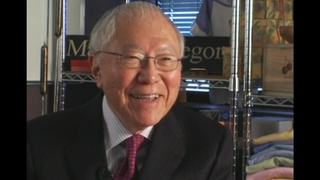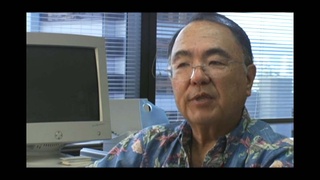Interviews
His experiences in Chicago after WWII
I don’t recall any real discrimination. So, Chicago was pretty good in that sense. And at school, I didn’t sense anything. There were a fair number of Japanese in the school. I’m not exactly sure why, but when the Japanese went to Chicago, they tended to cluster to just maybe for some kind of a feeling of ease that they went together. So, at this high school, there were a fair number of Japanese also.
Date: February 10, 2004
Location: California, US
Interviewer: Gwenn M. Jensen
Contributed by: Watase Media Arts Center, Japanese American National Museum.
Explore More Videos

Thoughts on the post-9/11 atmosphere in the U.S.
(1930-2018) Nisei born in Peru. Taken to the United States during WWII.

Dealing with racism within army unit in Korea
(b. 1939) Japanese American painter, printmaker & professor

Making the decision to resist the draft
(b. 1923) Nisei from Washington. Resisted draft during WWII.

Undergraduate studies interrupted following Pearl Harbor
(b. 1921) Nisei businessman. Established "Made in Oregon" retail stores

Difficulty getting work during World War II
(b. 1921) Nisei businessman. Established "Made in Oregon" retail stores

Discharged from the U.S. Army after Pearl Harbor
(b. 1918) Founder Azumano Travel


Stereotypes about Japanese: past and present (Spanish)
(b. 1937) Professional journalist

World War II hysteria against Japanese in New York City
(1924-2018) Researcher, Activist




Being an American soldier and an "enemy alien"
(1923-2011) Lawyer, MIS veteran, founder of Francis and Sarah Sogi Foundation

Not relating to Japan Americans' experiences on the mainland
(1923-2011) Lawyer, MIS veteran, founder of Francis and Sarah Sogi Foundation

